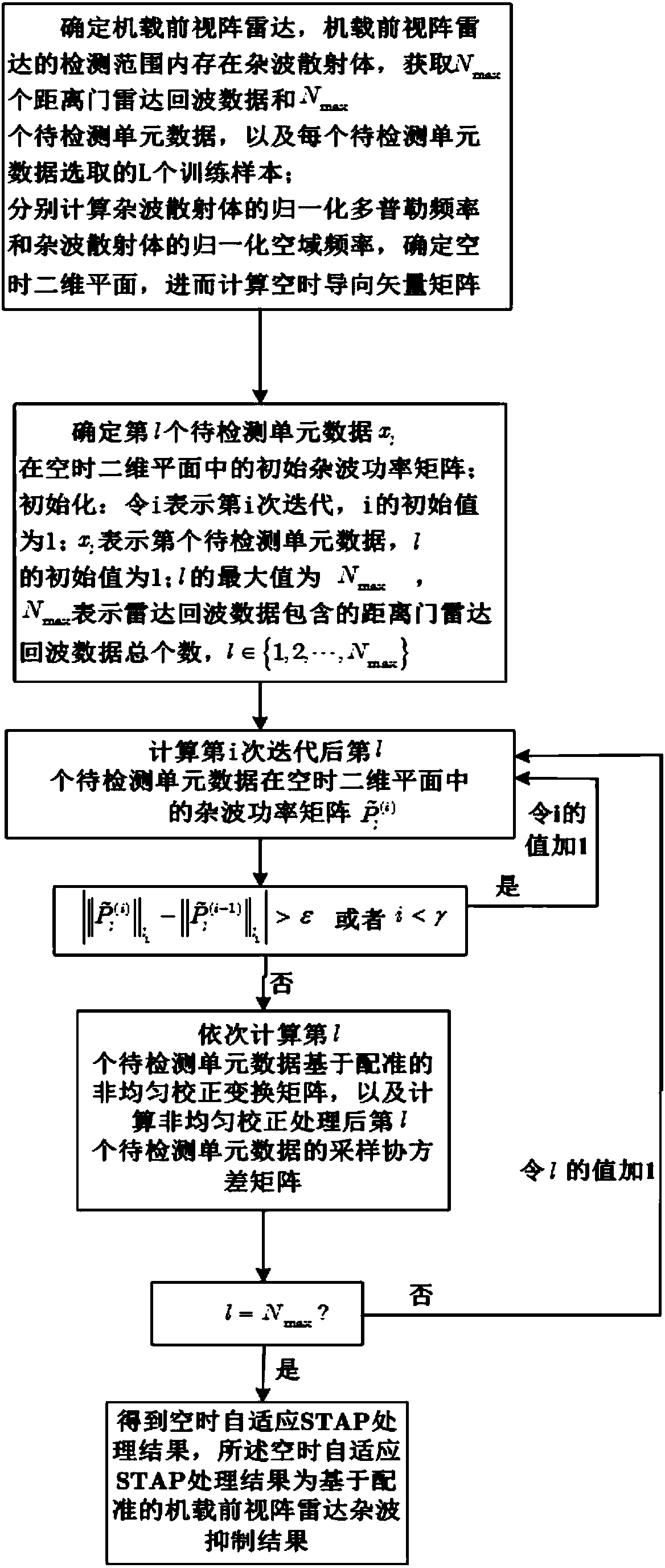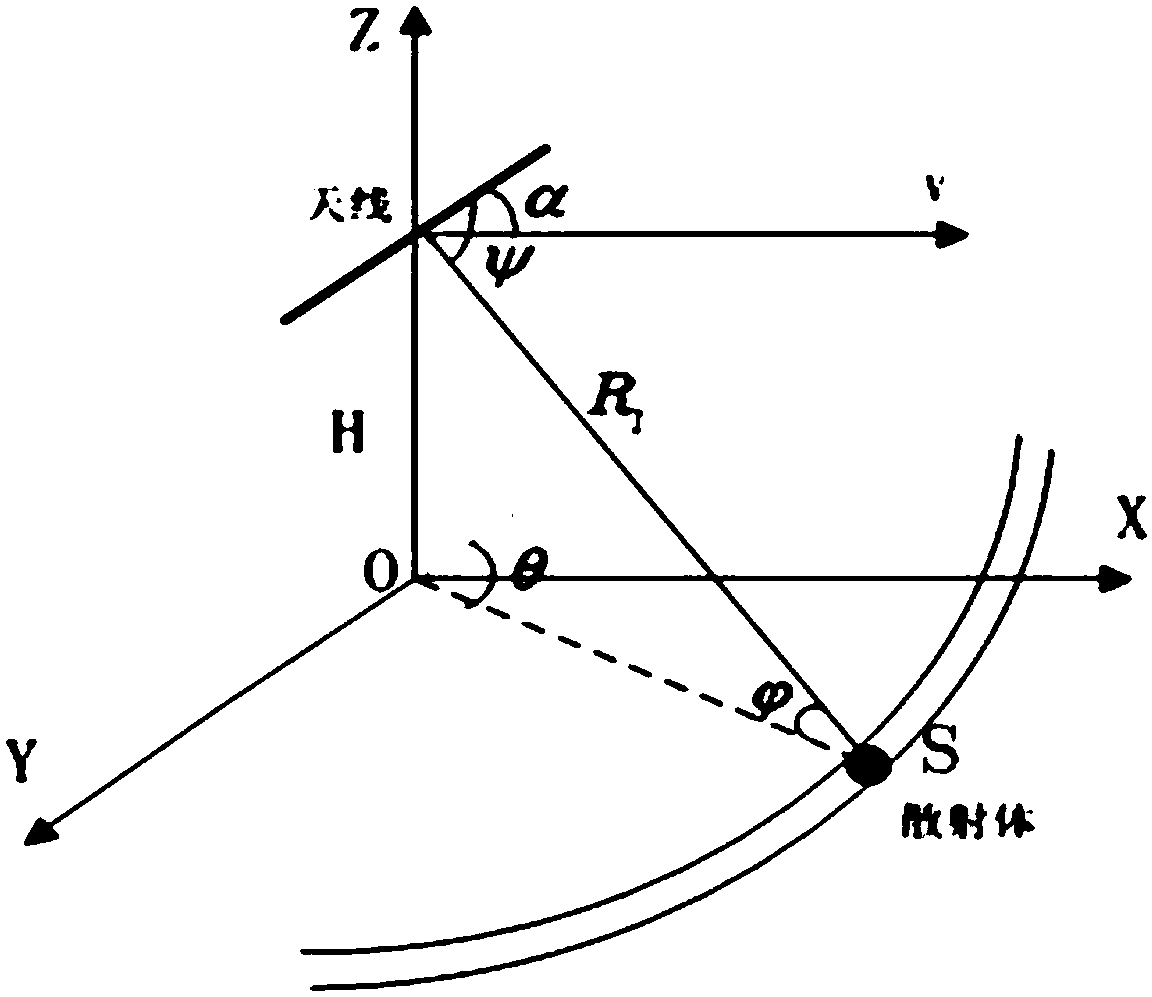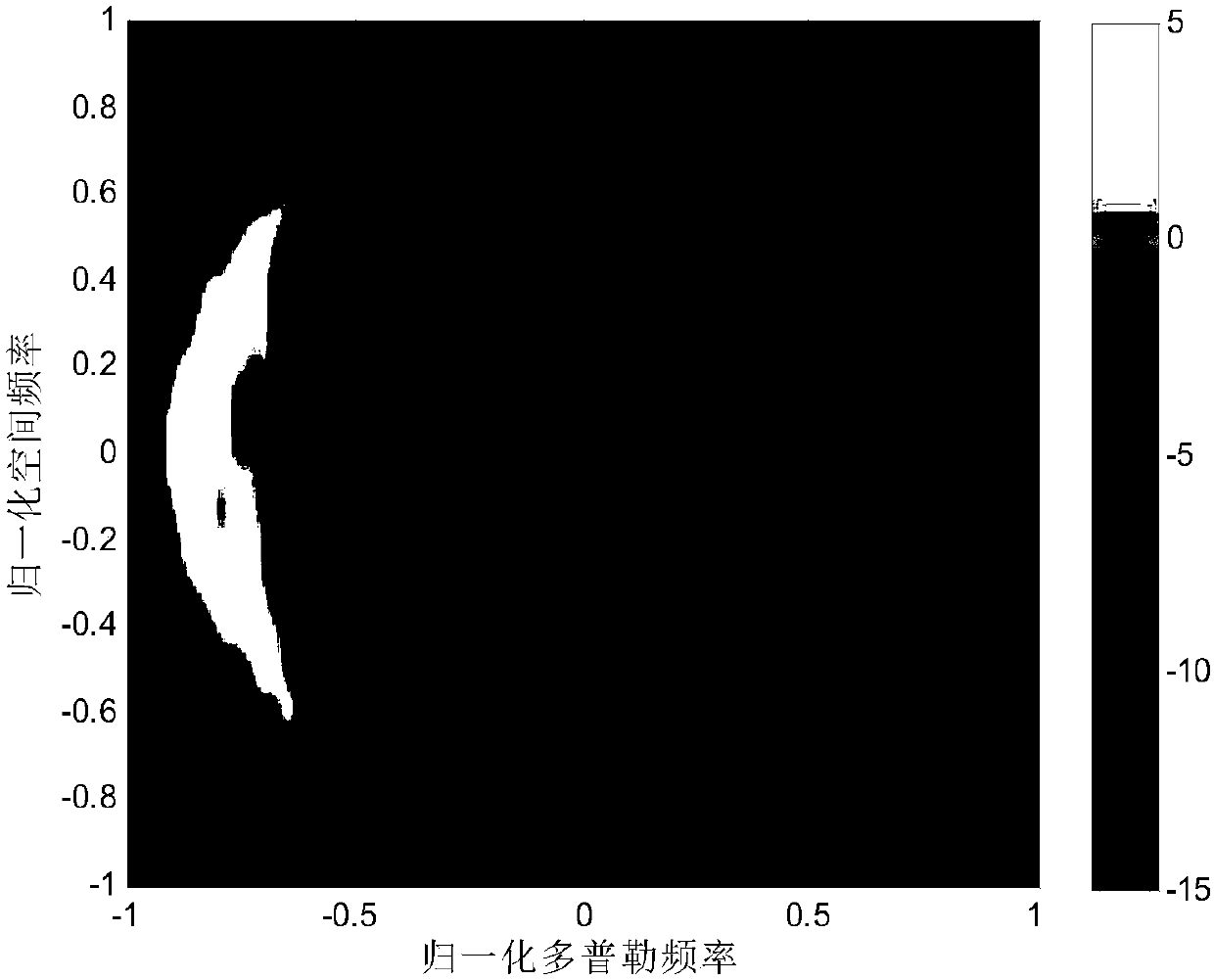Registration-based onboard forward-looking radar clutter suppression method
A clutter suppression and radar echo technology, applied in the radar field, can solve problems such as the degradation of STAP clutter suppression performance, the non-uniformity of airborne radar echo data, and the difficulty of satisfying the conditions of independent and identically distributed samples, so as to reduce the amount of calculation, Improve real-time effect
- Summary
- Abstract
- Description
- Claims
- Application Information
AI Technical Summary
Problems solved by technology
Method used
Image
Examples
Embodiment Construction
[0031] refer to figure 1 , is a flow chart of a registration-based airborne forward-looking array radar clutter suppression method of the present invention; the registration-based airborne forward-looking array radar clutter suppression method comprises the following steps:
[0032] Step 1. Determine the airborne forward-looking array radar. There is a clutter scatterer S within the detection range of the airborne forward-looking array radar. Airborne forward-looking array radar unwanted echo objects.
[0033] The airborne forward-looking array radar transmits signals and receives radar echo data, and the radar echo data contains N max The radar echo data of the range gates are sequentially recorded as the radar echo data of the first range gate, the radar echo data of the second range gate, ..., the Nth max The radar echo data of each range gate; record the radar echo data of each range gate as a unit data to be detected, and then get N max unit data to be tested.
[0034...
PUM
 Login to View More
Login to View More Abstract
Description
Claims
Application Information
 Login to View More
Login to View More - R&D
- Intellectual Property
- Life Sciences
- Materials
- Tech Scout
- Unparalleled Data Quality
- Higher Quality Content
- 60% Fewer Hallucinations
Browse by: Latest US Patents, China's latest patents, Technical Efficacy Thesaurus, Application Domain, Technology Topic, Popular Technical Reports.
© 2025 PatSnap. All rights reserved.Legal|Privacy policy|Modern Slavery Act Transparency Statement|Sitemap|About US| Contact US: help@patsnap.com



